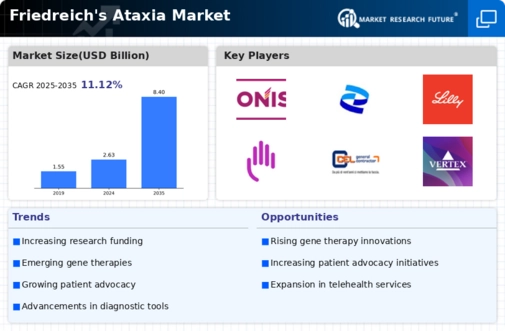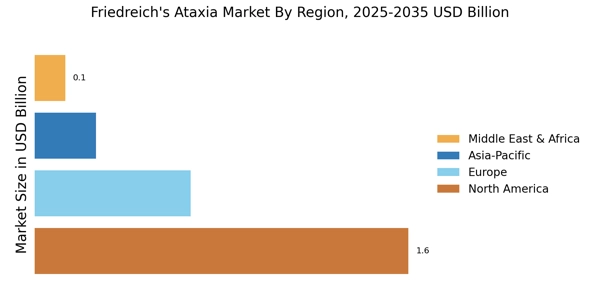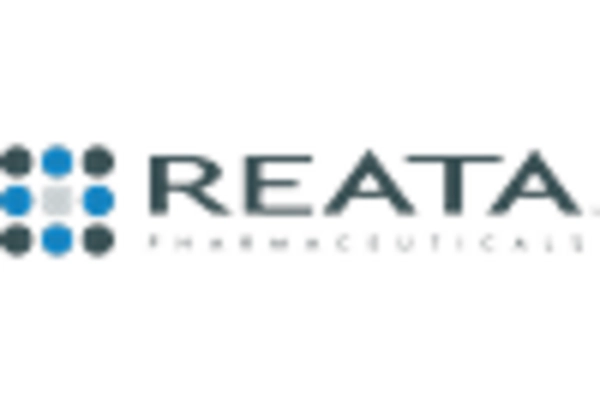Advancements in Gene Therapy
Recent advancements in gene therapy are poised to revolutionize the Friedreich's Ataxia Market. Innovative approaches targeting the underlying genetic causes of the disease are being explored, with several clinical trials currently underway. These therapies aim to address the root of the condition rather than merely managing symptoms, which could lead to more effective treatment options. The potential for gene therapy to alter the disease's progression is attracting significant attention from pharmaceutical companies and investors alike. As these therapies move closer to commercialization, they may reshape the landscape of the Friedreich's Ataxia Market, offering hope to patients and families affected by this debilitating condition.
Rising Prevalence of Friedreich's Ataxia
The increasing prevalence of Friedreich's Ataxia is a notable driver in the Friedreich's Ataxia Market. Recent estimates suggest that the condition affects approximately 1 in 50,000 individuals, leading to a growing patient population that necessitates effective treatment options. This rising prevalence is likely to stimulate demand for innovative therapies and interventions, thereby expanding the market. As awareness of the disease increases, more individuals are being diagnosed, which could further contribute to market growth. The need for specialized care and management strategies for patients with Friedreich's Ataxia is becoming more pronounced, indicating a potential for increased investment in research and development within the Friedreich's Ataxia Market.
Collaborative Efforts in Drug Development
Collaborative efforts in drug development are emerging as a key driver in the Friedreich's Ataxia Market. Partnerships between academic institutions, pharmaceutical companies, and patient advocacy groups are becoming increasingly common, facilitating the sharing of knowledge and resources. These collaborations are essential for accelerating the development of new therapies and ensuring that they meet the needs of patients. By pooling expertise and funding, stakeholders can navigate the complexities of Friedreich's Ataxia research more effectively. This trend towards collaboration is likely to enhance the Friedreich's Ataxia Market, as it fosters innovation and expedites the delivery of new treatment options to patients.
Growing Awareness and Education Initiatives
Growing awareness and education initiatives surrounding Friedreich's Ataxia are driving the Friedreich's Ataxia Market forward. Increased efforts by advocacy groups and healthcare professionals to educate the public about the disease are leading to earlier diagnoses and better management of symptoms. As awareness grows, more patients are likely to seek treatment, thereby expanding the market. Educational campaigns are also fostering a better understanding of the disease among healthcare providers, which could enhance the quality of care available to patients. This heightened awareness is expected to have a lasting impact on the Friedreich's Ataxia Market, as it encourages more research and development efforts.
Increased Funding for Rare Disease Research
The Friedreich's Ataxia Market is benefiting from increased funding directed towards rare disease research. Governments and private organizations are recognizing the need for more resources to develop treatments for conditions like Friedreich's Ataxia, which have historically been underfunded. This influx of capital is likely to accelerate research initiatives, leading to the discovery of new therapeutic options. In recent years, funding for rare disease research has seen a marked increase, with millions allocated to projects focused on Friedreich's Ataxia. This financial support is crucial for fostering innovation and advancing the Friedreich's Ataxia Market, ultimately improving patient outcomes.


















Leave a Comment